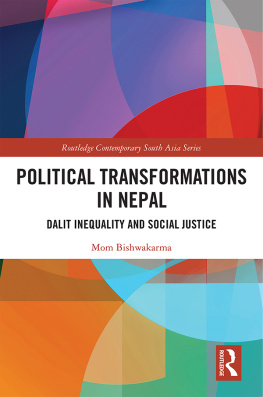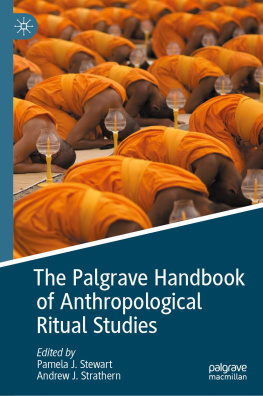
Landscape, Ritual and Identity Among the Hyolmo of Nepal
This book analyzes the social, political and religious life of the Hyolmo people of Nepal. Highlighting patterns of change and adaptation, it addresses the Shamanic-Buddhist interface that exists in the animated landscape of the Himalayas.
Opening with an analysis of the ethnic revival of Nepal, the book first considers the Himalayan religious landscape and its people. Specific attention is then given to Helambu, home of the Hyolmo people, within the framework of Tibetan Buddhism. The discussion then turns to the persisting shamanic tradition of the region and the ritual dynamics of Hyolmo culture. The book concludes by considering broader questions of Hyolmo identity in the Nepalese context, as well as reflecting on the interconnection of landscape, ritual and identity.
Offering a unique insight into a fascinating Himalayan culture and its formation, this book will be of great interest to scholars of indigenous peoples and religion across religious studies, Buddhist studies, cultural anthropology and South Asian studies.
Davide Torri is currently a researcher at the Department of History Anthropology Religions Performing Arts (official English translation of the SARAS [Storia Antropologia Religioni Arte Spettacolo]), at Sapienza University of Rome. In addition, he is associate member of the Heidelberg Centre for Transcultural Studies (Germany) and of the Centre dEtudes Himalayennes of the CNRS (France).
He co-edited Shamanism and Violence: Power, Repression and Suffering in Indigenous Religious Conflicts (2013) and is the author of Il Lama e il Bombo: Sciamanismo e buddhismo tra gli Hyolmo del Nepal (2014).
Vitality of Indigenous Religions
Series Editors: Graham Harvey
Open University, UK
Afeosemime Adogame
Princeton Theological Seminary, USA
Ins Talamantez
University of California, Santa Barbara, USA
Routledges Vitality of Indigenous Religions series offers an exciting cluster of research monographs, drawing together volumes from leading international scholars across a wide range of disciplinary perspectives. Indigenous religions are vital and empowering for many thousands of indigenous peoples globally, and dialogue with, and consideration of, these diverse religious life-ways promises to challenge and refine the methodologies of a number of academic disciplines, whilst greatly enhancing understandings of the world.
This series explores the development of contemporary indigenous religions from traditional, ancestral precursors, but the characteristic contribution of the series is its focus on their living and current manifestations. Devoted to the contemporary expression, experience and understanding of particular indigenous peoples and their religions, books address key issues which include: the sacredness of land, exile from lands, diasporic survival and diversification, the indigenization of Christianity and other missionary religions, sacred language, and re-vitalization movements. Proving of particular value to academics, graduates, postgraduates and higher level undergraduate readers worldwide, this series holds obvious attraction to scholars of Native American studies, Maori studies, African studies and offers invaluable contributions to religious studies, sociology, anthropology, geography and other related subject areas.
The Expanding World Ayahuasca Diaspora
Appropriation, Integration and Legislation
Edited by Beatriz Caiuby Labate and Clancy Cavnar
Rethinking Relations and Animism
Personhood and Materiality
Edited by Miguel Astor-Aguilera and Graham Harvey
Landscape, Ritual and Identity Among the Hyolmo of Nepal
Davide Torri
For more information about this series, please visit: www.routledge.com/religion/series/AINDIREL
First published 2020
by Routledge
2 Park Square, Milton Park, Abingdon, Oxon OX14 4RN
and by Routledge
52 Vanderbilt Avenue, New York, NY 10017
Routledge is an imprint of the Taylor & Francis Group, an informa business
2020 Davide Torri
The right of Davide Torri to be identified as author of this work has been asserted by him in accordance with sections 77 and 78 of the Copyright, Designs and Patents Act 1988.
All rights reserved. No part of this book may be reprinted or reproduced or utilised in any form or by any electronic, mechanical, or other means, now known or hereafter invented, including photocopying and recording, or in any information storage or retrieval system, without permission in writing from the publishers.
Trademark notice: Product or corporate names may be trademarks or registered trademarks, and are used only for identification and explanation without intent to infringe.
British Library Cataloguing-in-Publication Data
A catalogue record for this book is available from the British Library
Library of Congress Cataloging-in-Publication Data
A catalog record for this book has been requested
ISBN: 978-1-472-47582-4 (hbk)
ISBN: 978-1-315-59139-1 (ebk)
Typeset in Sabon
by Apex CoVantage, LLC
to my parents, Sandro and Carmelina
Graham Harvey
Davide Torris engagement with the Hyolmo people, indigenous to Nepals Helambu valley, provides a powerful encouragement to pursue the dynamic flows and paradoxes of lived reality. Rather than further reifying the apparently fixed and bounded categories that are too often presented to us as determinative, Torri shows that more diverse interactions are productive both for the Hyolmo people and for scholarly debate. Put (deceptively) simply, relationships rather than fixed categories, or relationality rather than identity, are key to understanding much of what happens among the Hyolmo people and others.
Indigeneity is more clearly presented here as a practice, a way of moving through the world, always engaged with and by alternative modes of belonging or performing. Lifeways and worldviews arise in complex interactions that transgress neat boundaries. This is why the books in this series, Vitality of Indigenous Religions, are at the cutting edge of academic and wider debate. They deserve to be read and carefully considered by a far wider audience than those who might already have some understanding of or interest in the particular focus of each book. This book is ostensibly and profoundly about the Hyolmo people, about Indigeneity in Nepal and the Himalayan region, and about landscapes and rituals. At the same time, it is also about regional politics, global networks, democratization, labour, health and much more.
The Hyolmo people address the question of what it means to be indigenous. They do so in conversation or contest with calls to identify (also or instead) as Nepalese citizens, as an ethnic minority comparable to other regional minorities (e.g. Indias adivasi communities), as Buddhists or as some sort of Hindus, as people who employ or engage with shamans (or bombo ritual specialists) as well as lamas, and/or as people more like others globally who identify as indigenous. These are only some of the ways of living among others that arise among and/or impact upon the Hyolmo people. Davide Torri presents a rich and moving picture of these and other possibilities. When it is noted that the Hyolmo people are a portion of the one-third of Nepals citizens who are identifiable as indigenous, we begin to sense the potential of their power and significance.










